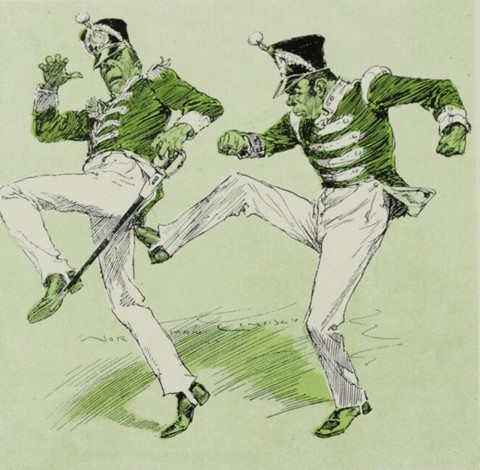The Past as a Foreign Country (1): Kicking Men in the Groin
Appalling as it seems today, there are a number of cases in the late 18th century where captains disciplined crew members or convicts by kicking them in their private parts.
Gary L. Sturgess
7/23/20252 min read
Studying shipboard life in the late 18th century, one sometimes comes across practices that are so foreign, so utterly different from what is acceptable today, that is impossible to comprehend them. As L.P. Hartley famously observed in The Go-Between, ‘The past is a foreign country; they do things differently there’.
The Neptune – which carried around 420 convicts to NSW in 1790, as part of the Second Fleet – had the highest mortality in the history of Australian transportation. And according to the testimony of some of its crew, taken for a criminal prosecution on the ship’s return, much of the responsibility lay with the master, Donald Trail, and his first mate, William Elrington, who violently beat the crew and convicts with metal speaking horns and lumps of wood, and deliberately kicked them in the groin.
Kicking a man in his private parts could have a life-changing impact – ruptured and swollen testicles, damage to the bladder so the men could no longer ‘hold their water’ – and it is impossible to understand how the captain of a naval vessel (or the master of a convict ship) could regard this as an acceptable form of discipline. Yet Donald Trail wasn’t the only one to adopt this grotesque form of summary punishment.
The most surprising offender in this regard was Charles Middleton, who would go on to become the Comptroller of the Royal Navy and Secretary of the Admiralty, and behind the scenes, a leading Abolitionist. In 1757, whilst serving as a naval captain, Middleton was accused of having kicked one of his warrant officers in the crotch. [2]
On the Britannia, which carried convicts to NSW in 1797, one of the ship’s officers struck a convict across the loins as he was stooping down to take a drink, resulting in faltering speech and (allegedly) his death some time later. [3]
In 1806, a midshipman on HMS Unité struck one of the seamen in the testicles, causing a rupture. The midshipman was immediately confined to his cabin, but the ultimate outcome of the case is unknown. [4]
And in 1820, Louis Antonio Rosso, who had been steward on the convict ship Eliza, sued the master, Francis Hunt, for having kicked him in his private parts after he refused to participate in the ‘crossing the line’ ceremonies. The ship’s surgeon found it necessary to remove his testicles. Rosso sued in the NSW courts, and while he succeeded, he was only awarded damages of £10. [5]
I still don’t understand how men could so casually abuse their fellows in this way, knowing that there was a reasonable prospect of permanent harm, although these examples do help us to see Donald Trail in perspective.
_____________________
[1] Illustration from W.H. Traill, ‘The Remarkable Major Semple’, The Lone Hand, 1 October 1909, p.605.
[2] NAM Rodger, The Wooden World: An Anatomy of the Georgian Navy, London: Collins, 1986, p.212, quoting Admiralty Court Martial Papers, UK National Archives (hereafter TNA) ADM1/5299, f.32
[3] Statement of Francis Cox, HRNSW 3:274 and TNA CO201/14/53.
[4] Journal of Robert Mercer Wilson, 1805-1809, in Rear-Admiral H.G. Thursfield (ed.), Five Naval Journals, 1789-1817, Abingdon, Oxon: Routledge for the Naval Records Society, 1951, p.138
[5] Dundas Allen, Early Georgian: Extracts from the Journal of George Allen (1800-1877), Sydney: Angus and Robertson, 1958, p.46.


Normal Lindsay, image of the NSW Corps guard on the 'Lady Shore' [1]
Contact us
Connect with us
Botany Baymen acknowledges the traditional custodians of country throughout Australia and respects their connection to land, water and community.
© Botany Baymen 2024. All rights reserved.
You may download, display, print and reproduce this content for your personal or non-commercial use but only in an unaltered form and with the copyright acknowledged.

